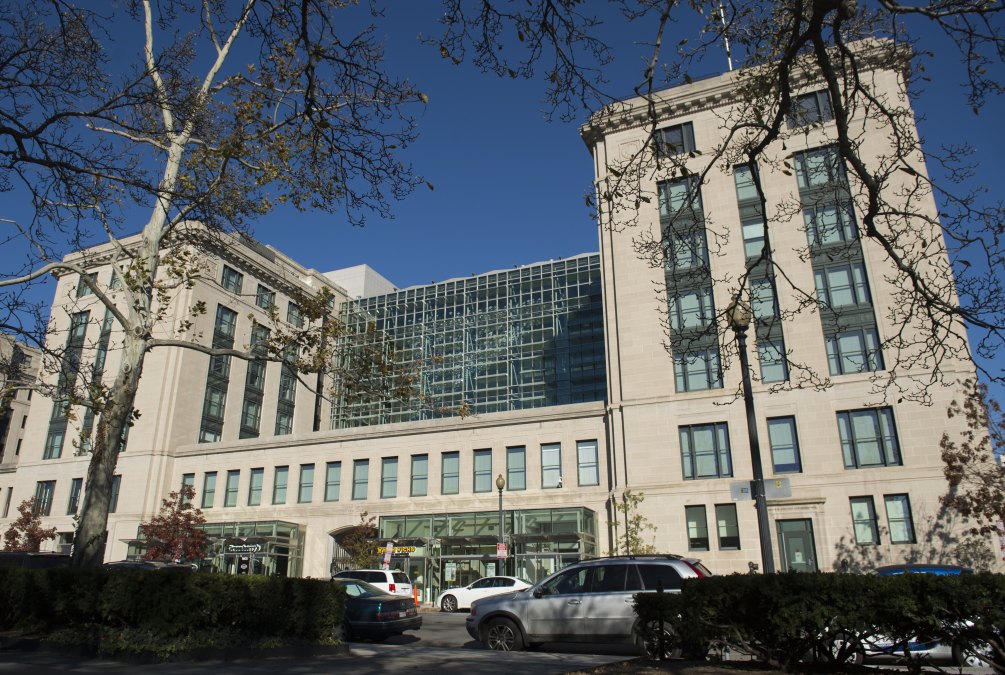TMF’s ‘next chapter’ will build on lessons learned, director says

With all of its American Rescue Plan funding tapped, the Technology Modernization Fund is on to a “next chapter” that will feature a “strong emphasis” on projects that have clear potential for governmentwide impact, the investment program’s leader said in an interview.
In an email to FedScoop, TMF Director Larry Bafundo said the investment vehicle is also interested in projects that address cybersecurity vulnerabilities, improve public services and modernize legacy systems. The types of investments the program is prioritizing, Bafundo said, include artificial intelligence, data management and analytics, shared services, cloud migration and more.
The comments from Bafundo, who took over as TMF’s permanent executive director in June, follow multiple calls from the federal CIO to fund the TMF and congressional efforts to pass a bill that would require TMF funds to be repaid or reimbursed. The companion bill is currently moving through the Senate.
Bafundo spoke with FedScoop about the program’s status, how the TMF is central to government modernization efforts and what the next steps will be.
Editor’s note: The transcript has been edited for clarity and length.
FedScoop: Do you believe that the current model of the TMF program is working adequately?
Larry Bafundo: Demand for the TMF has been strong. Since the fund’s inception, we’ve received nearly $4 billion in proposals and we continue to see strong demand today. We now manage over $1 billion in investments across more than 30 agencies.
Now that we’ve allocated all of the [American Rescue Plan] funds, we’re preparing for the next chapter of the TMF, which builds on the successes we’ve seen to date, with a focus on helping agencies adopt more effective and efficient models for modernization and sharing insights and lessons-learned.
FS: Is there any place within the program that you believe could be changed to assist with modernization efforts across agencies?
LB: We know that funding alone is not the answer to the challenges facing the federal IT landscape. Agencies also need capacity and modern practices, like product management and alternative procurement methods, to adopt new models and deliver technology effectively. Similarly, we still see agencies that think of modernization in terms of swapping out old technology with new, or “stop and start,” rather than as a continual approach. This is a really important shift that we need to help agencies make, as policies, threats, and customer needs are always changing, and which we’ll be placing a stronger emphasis on in future investments.
Additionally, the TMF was established with a broad mandate to help agencies with a variety of modernization needs — from cybersecurity to customer experience — while also operating as a self-sustaining and revolving fund. This can create a tension between funding compelling and necessary initiatives, like responding to an urgent cybersecurity breach, or public need, and maintaining a high-repayment rate back to the TMF. We also know that we need to be thinking about successful modernization as more than just cost savings or cost avoidance. Overall, what this means in practice is that if we over-index towards cost savings as our goal, we may not be able to invest as much in other things that are both important and part of TMF’s mandate. For these reasons and more flexible repayment terms and additional funding to the TMF is critical to its success.
FS: What does the TMF program need from legislators and agencies to continue funding technology projects appropriately?
LB: The TMF is uniquely positioned to be the funding vehicle of choice for federal IT modernization — with its incremental funding model tied to milestones, or value delivered, and oversight from the TMF [Program Management Office] and TMF Board, the TMF provides agencies with the funding and guardrails necessary to achieve their modernization goals and maintains a project success rate of over 80%.
[From legislators,] consistent funding appropriations, backed by bipartisan support, is essential to maintain the momentum of federal IT modernization.
Equally important is the need for more flexible repayment options. While some TMF projects yield immediate cost savings, some of the most transformative initiatives may not show financial returns in the short term. By allowing for adjusted repayment terms, we can invest in high-impact projects that promise significant long-term benefits in areas such as cybersecurity enhancement and improved citizen services.
With reduced funding available for new investments now that $1 billion in ARP funding has been allocated, TMF seeks proposals that focus on enabling new capabilities that help organizations deliver on their mission, such as delivering a new service digitally, rather than just funding singular IT projects. We are looking for technology to serve as a lever of change for agencies, not just a replacement for older systems.
We also value an iterative, evidence-driven approach using prototypes and pilots. Successful applicants actively engage in TMF workshops, share insights, and maintain open communication throughout the process. This collaborative approach ensures funded projects contribute to broader governmentwide IT modernization goals.
FS: Where are the funding levels at currently?
LB: Today the fund manages more than $1 billion for 63 investments across 34 federal agencies. 52 of these investments were made with American Rescue Plan funding to address urgent IT modernization challenges. We’ve allocated 100% of the ARP funding and we’re still making new investments, but are also preparing for the next chapter of TMF.
FS: What does the TMF program need from legislators and agencies to continue funding technology projects appropriately?
LB: Sustained funding. The TMF is grateful for the ARP funds that allowed us to ensure we meet the needs of agencies in areas such as CX, cybersecurity and more, but without further appropriations and support, we are limited in the continued impact we can make.
This story was updated Sept. 11, 2024 to clarify that Bafundo took over as TMF’s permanent executive director in June. He had previously served as its acting director.



